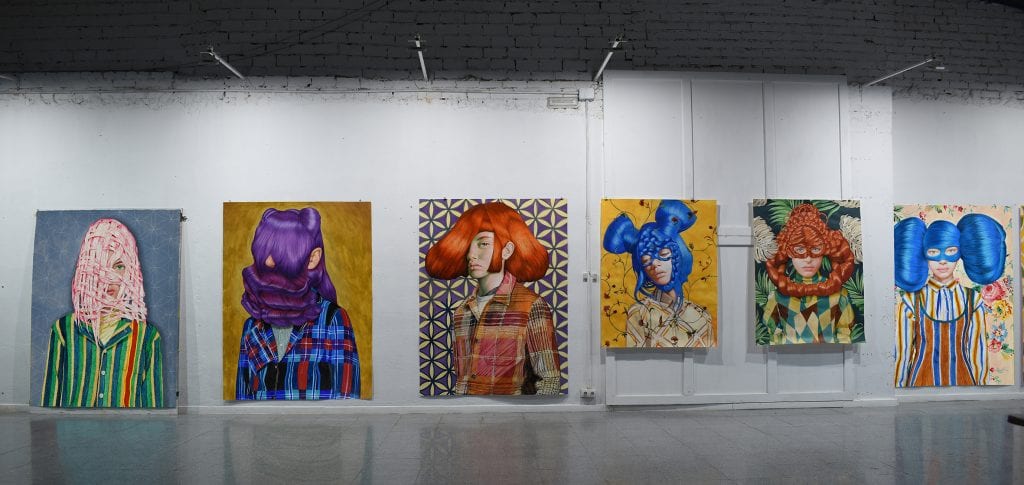Born and raised in Spain, Ángeles Agrela has been plowing the ground of her career and is well versed today as a recognized mid-career artist. Some argue she is the most recognized contemporary artist in Spain, an essential cornerstone in the Spanish and Feminist art scene. Through her upbringing in Southern Spain, Agrela’s work has been formed by the pictorial style of classical painting, as well as the undeniably abstract way in which women have been depicted over time “through the medium of art.” The product, highly detailed colored pencil drawings on linen, present the exoticism through which women have been seen over time in brightly colored and extravagant hairstyles that often hide a portion of the subject’s face. It becomes an intentional concealment of facial features that could show real emotion, replaced by striking ensembles of hairstyles that divert the viewer’s mind from the subject to the concept and beauty. Read on to learn more about the underlying messages behind each of these monumental portraits.
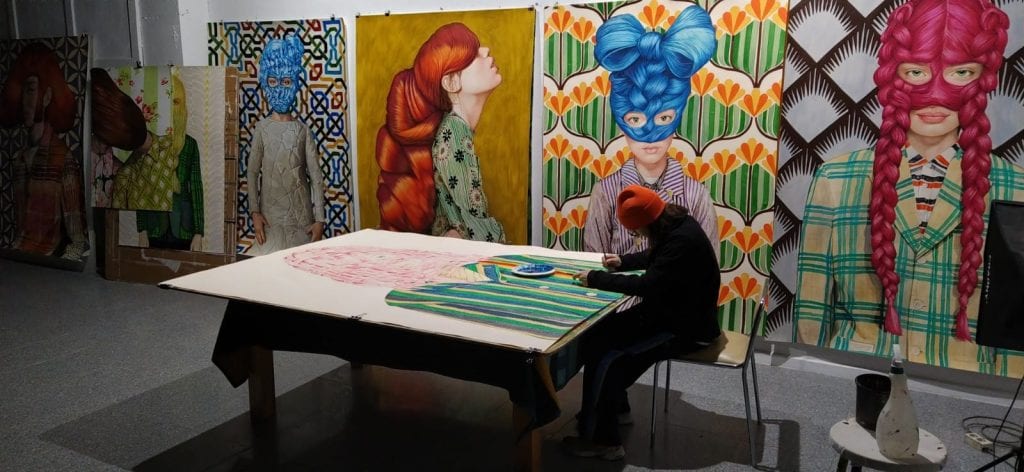
View of the Artist’s Studio, Granada, 2020, Courtesy of the Artist
Tell us about yourself. Where are you from and how did art first come into your life?
I was born in Úbeda, a small city in the south of Spain, which is a UNESCO world heritage site due to its renaissance architecture. My primary school was a palace from the 16th century. Currently I live in Granada, although I have lived in Naples, Havana, and Berlin. I believe all of that matters.
My parents are great art enthusiasts and small collectors, and I would travel with them as a young girl to museums and galleries. I believe that thanks to them I have felt it was natural to have this need to be surrounded by art, ever since I was a child. With my maternal grandmother I learnt to sew and love clothes, and this has also had a great influence on my work, although I didn’t realise this until much later.
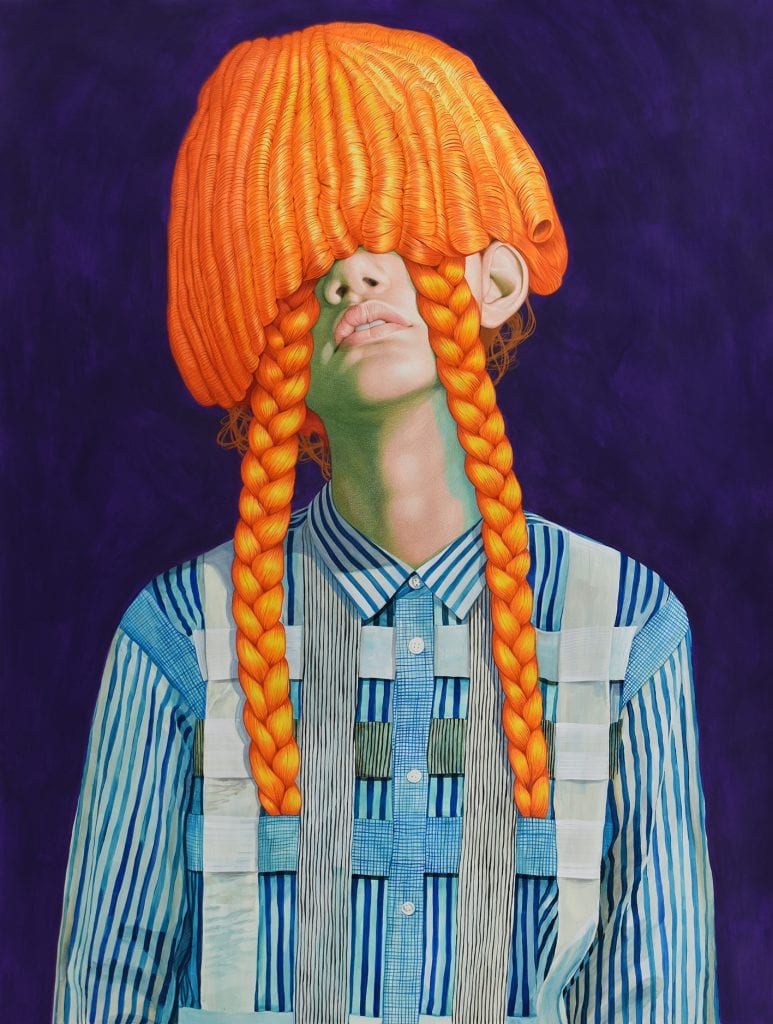
Carrie, 2020, Acrylic and Pencil on Paper, 200 cm x 150 cm, Courtesy of the Artist and Yusto Giner Gallery
Has your work always taken on the style it currently embodies?
No. For me style and technique are never the end, just the means. I’ve worked with video, photography, performance, sculpture, embroidery, or clothes when I have felt the need. Now I am very focused on painting and drawing. I really enjoy it and it is the ideal medium to express what I want to at this moment, for purposes which are conceptual as well.
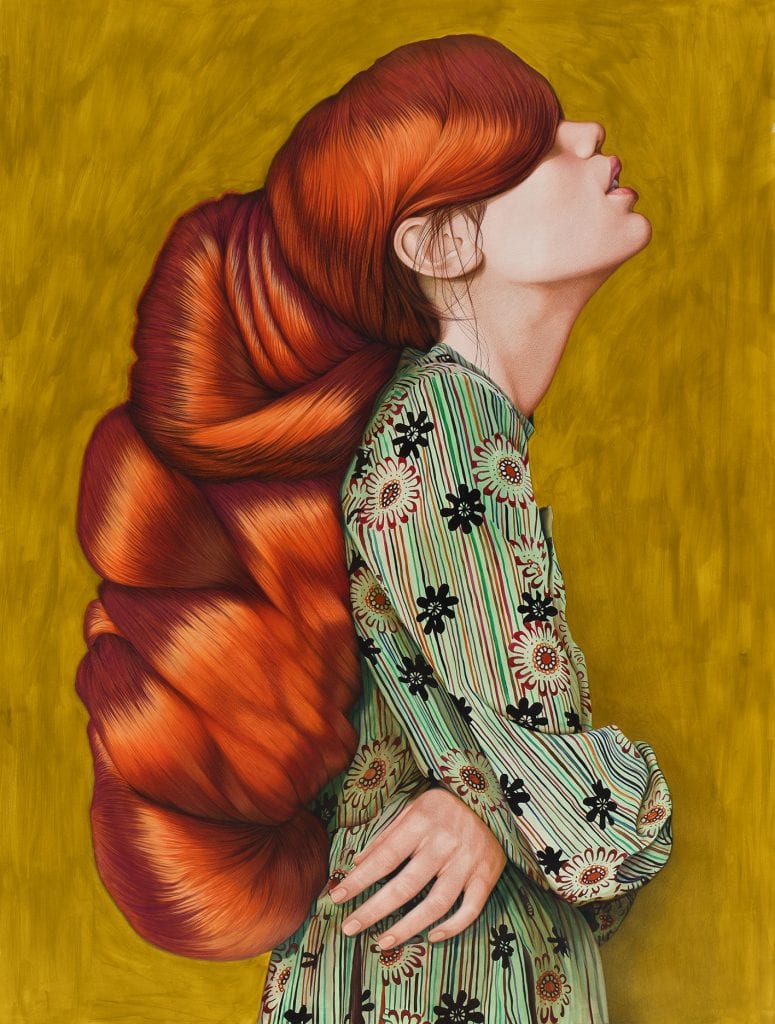
Gloria, 2020, Acrylic and Pencil on Paper, 200 cm x 150 cm, Courtesy of the Artist and Yusto Giner Gallery
What is your process like? How do you begin a work?
It is very complicated to know what the beginning is, especially when you’ve been doing this for so long. Before starting on a work, I consult my preparatory work/file. I combine materials found on the web with my own images, that are the result of photography sessions with models in the studio.
Before anything, there is an investigation into what I want to photograph and how, so it is a complex process to get to the drawing itself. I do not work on isolated pieces, so that as they accumulate in my studio they complement one another. A project usually comes directly fed from the previous one, as one thing leads to another.
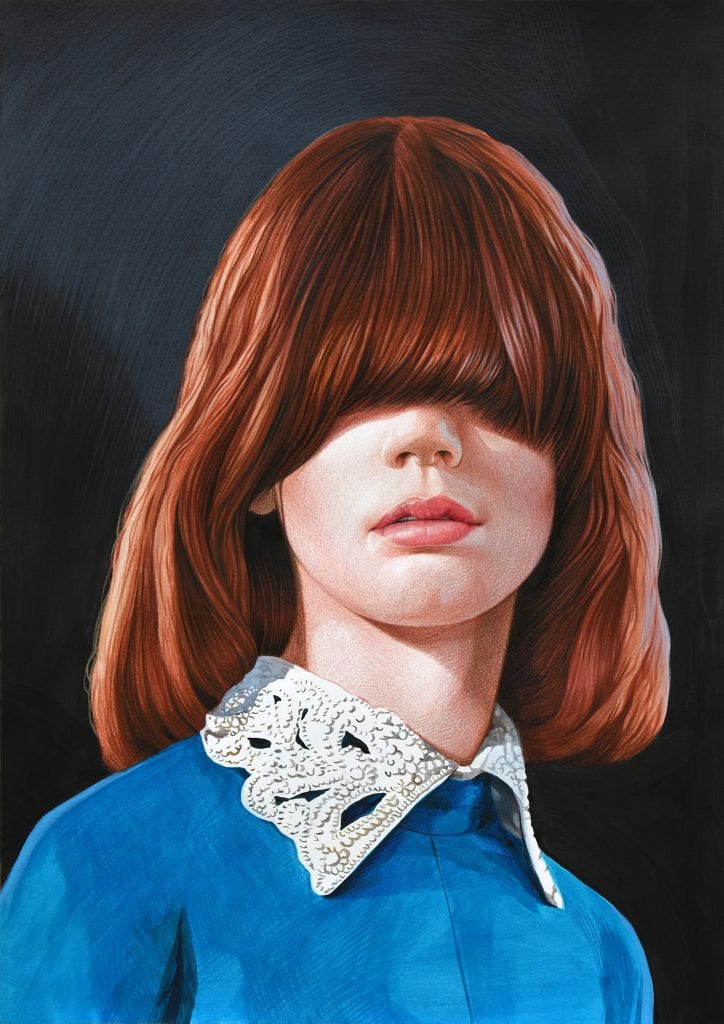
Lydia, 2019, Acrylic and Pencil on Paper, 70 cm x 50 cm, Courtesy of the Artist and Yusto Giner Gallery
Walk us through a day in the studio.
I have a very large and bright studio. When the pandemic started I decided to come here to live and I’ve stayed here since. So, I get up and I go to sleep looking at the art I’m working on and I love it. Being here gives me the feeling of not having to run around to scramble together enough hours to work and everything flows more easily. Everything else amounts to a normal day: I work, I read and I observe, I cook. I also have a small orchard and a space to project movies at night.
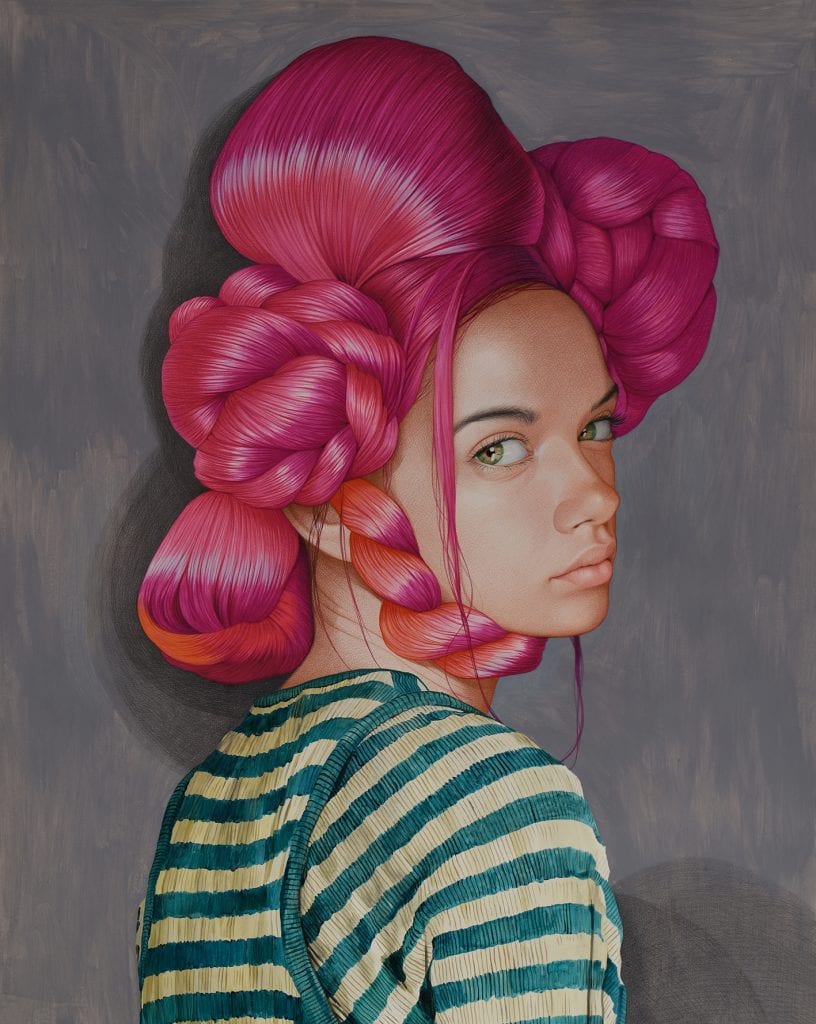
Blanca, 2020, Acrylic and Pencil on Paper, 200 cm x 150 cm, Courtesy of the Artist and Yusto Giner Gallery
From where do you draw inspiration?
From many different worlds, from art history and also from contemporary art, from fashion, comics, illustrations, music, and social media. From high culture and popular culture. At the moment, I am very inspired by the Golden Age of classical painting. The great masters are not ‘great’ by chance, I always find inspiration and solutions in their works. My contemporary references are many, from body art, dance, to the first feminist artists and many modern-day female and male painters. I am also interested in the relation of fashion with art. I particularly like Belgian and Japanese fashion designers. I’m excited by comics too: Charles Burns or Daniel Clowes, and also by illustrators.
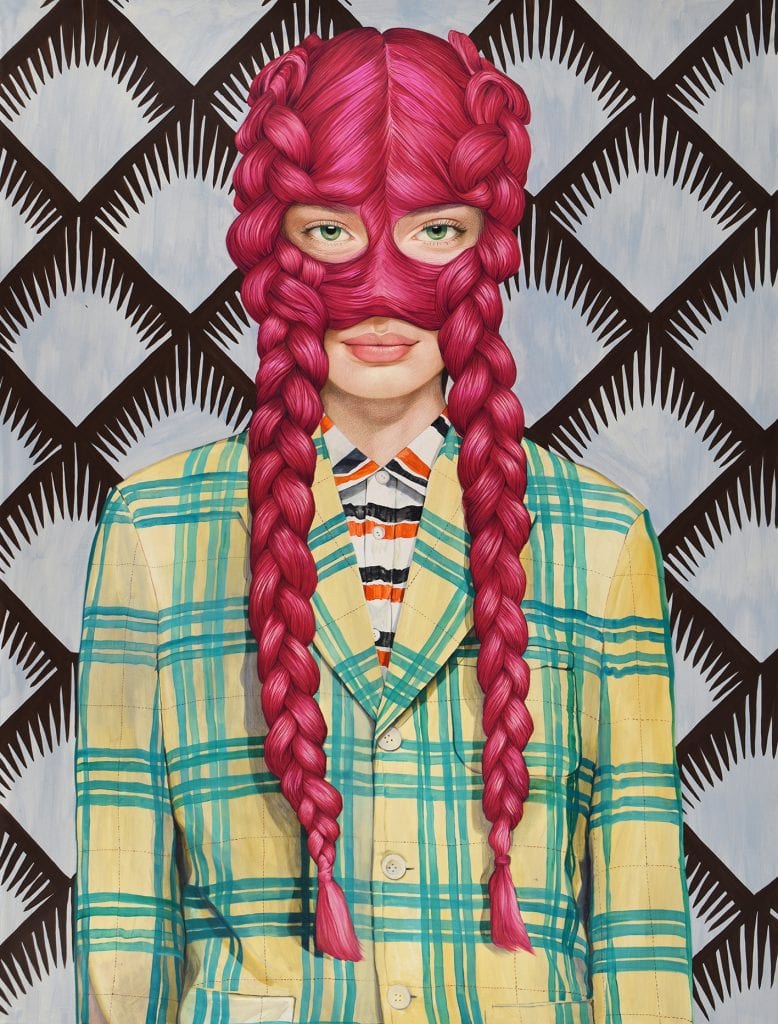
Rosita, 2020, Acrylic and Pencil on Paper, 200 cm x 150 cm, Courtesy of the Artist and Yusto Giner Gallery
What deeper questions do you think your work asks?
I think it is still necessary for female artists to provide our own contemporary view on representing the feminine though the medium of art. I try to do this by appropriating the classical language of painting and drawing and finding images with a studied ambiguity that I can give a different meaning to.
These recent works work as portraits, but sometimes, they distract the attention away from the particular facial features of the model, with the effect of generating extra attention towards the things that define the image as the person, the things that we have chosen to make up our image. For this effect, I use masses of hair that cover the face and clothing, decorative patterns of the clothes themselves and the background. The symbolism of the mask is important, the symbolic significance of the hair in many cultures, as well as the chameleonic character of fashion and the clothing itself, all of which add to the image of a person even when the face is hidden.
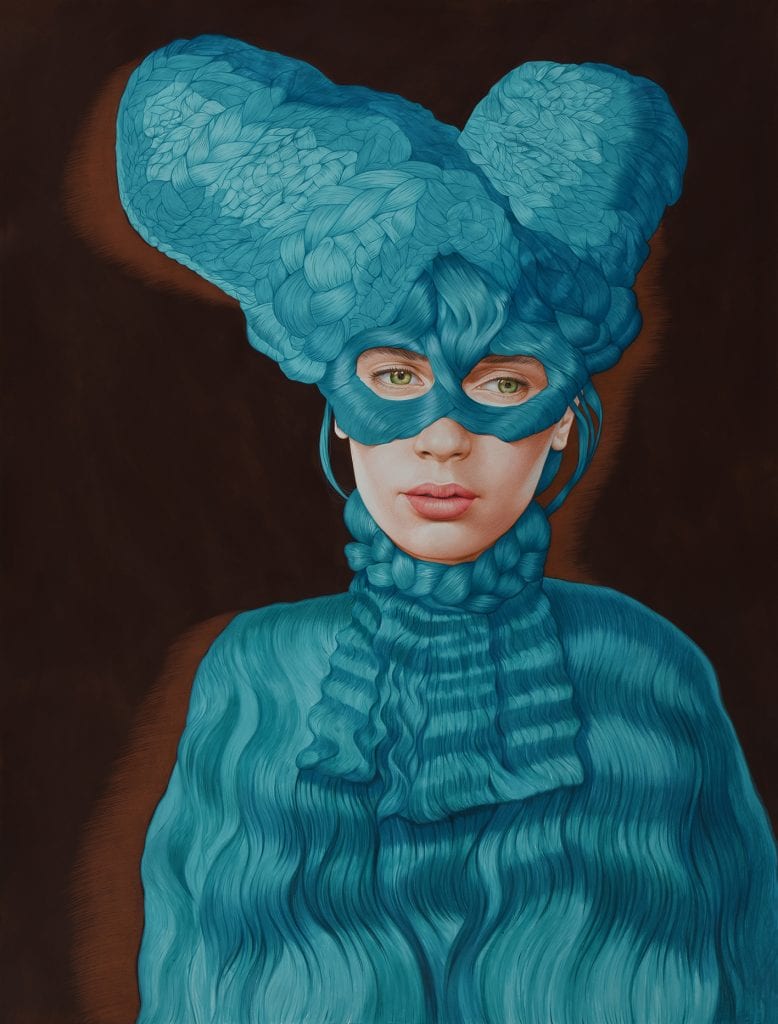
Salomé, 2020, Acrylic and Pencil on Paper, 200 cm x 150 cm, Courtesy of the Artist and Yusto Giner Gallery
Does your work reference any Art Historical movements or figures?
Of course. I’ve already spoken about my interest for classical painting, and especially portraits due to their ability to attract the eyes towards a piece of painting, which is only paint (more so, the closer you get to it). But in spite of everything, the illusion is so great that we identify immediately with the vision of another human being. I’ve admired in person the works of artists such as Vermeer, Hans Holbein, Velazquez, Robert Campin, Durero, Guido Reni… I’ve glued my nose to many a painting in museums my whole life. Even if in my drawings, it is not my primary intention to show my skill as a painter, I do want to add an extra layer of meaning and to render the spectator capable of becoming enthralled by the conceptual approach just as much as by the fascination with the object itself. This is what I have learned, undoubtedly, from the classics.
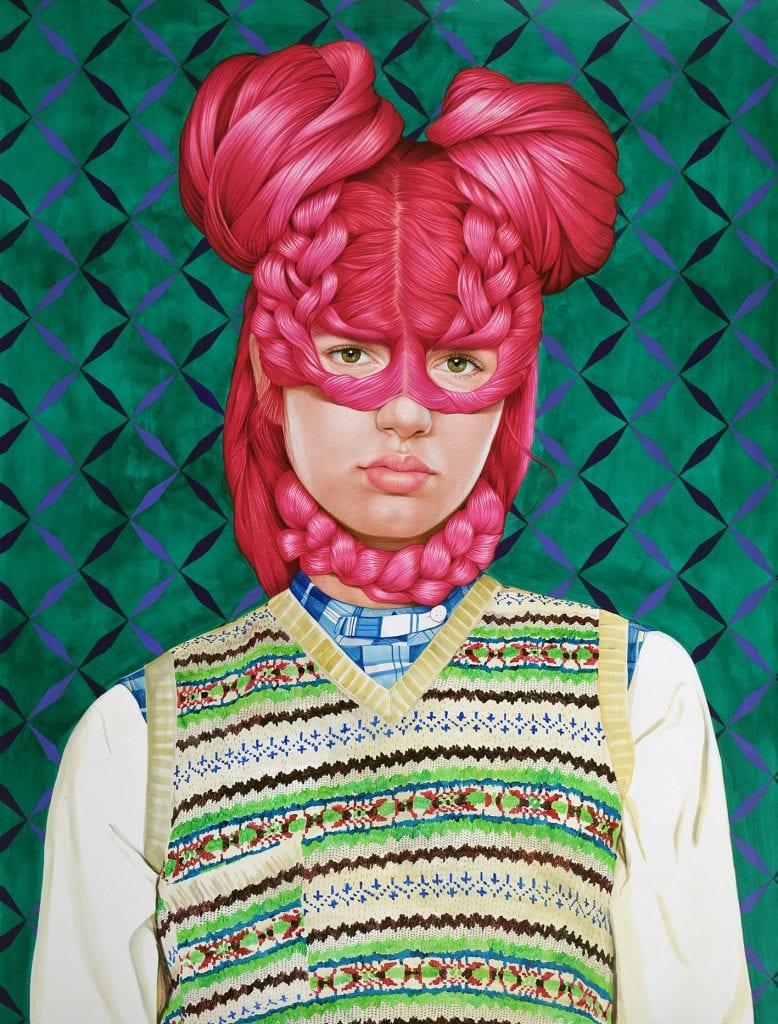
Maya, 2020, Acrylic and Pencil on Paper, 200 cm x 150 cm, Courtesy of the Artist and Yusto Giner Gallery
What’s next for you?
In the short term, I have several fairs with my gallery, Yusto/Giner, and an individual exhibition with them in 2021, as well as some important collective exhibitions in my country.
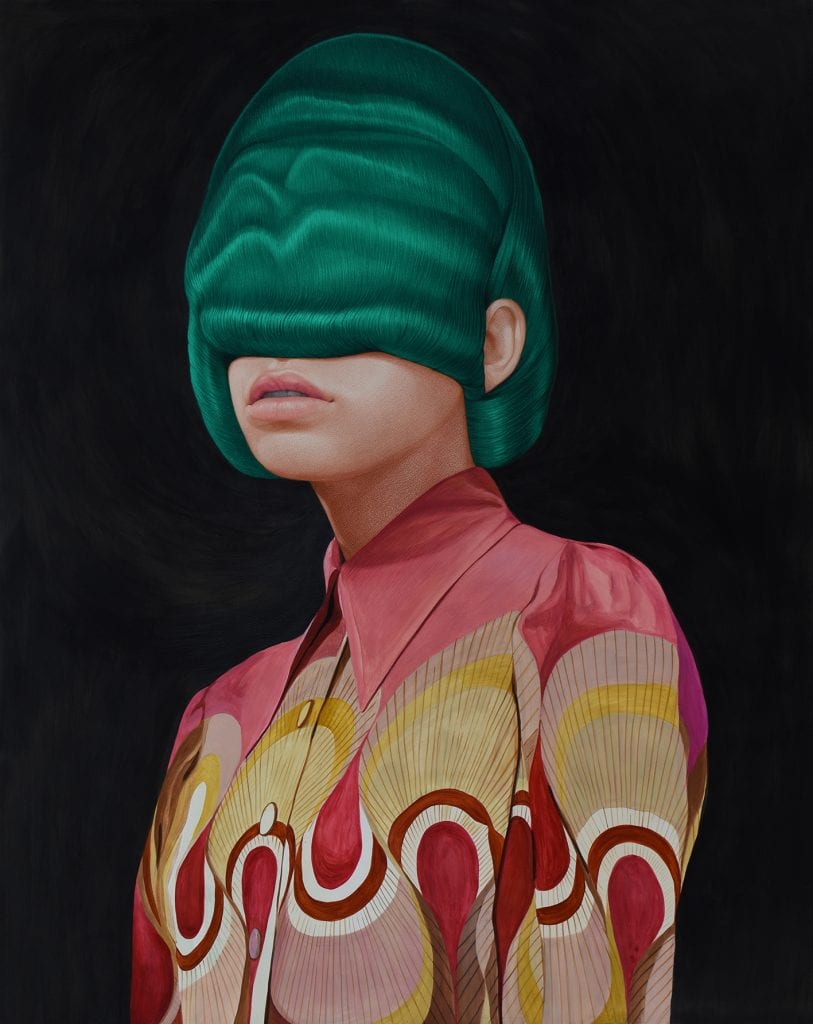
Esmeralda, 2020, Acrylic and Pencil on Paper, 200 cm x 150 cm, Courtesy of the Artist and Yusto Giner Gallery
At the end of each interview we like to ask the artist to recommend a friend whose work you like and would like us to interview next. Who would you suggest?
That’s a difficult question! I like so many artists, for various reasons. But, I can tell you of someone who walks between the limits of illustration and art: Ryan Heshka. I don’t know him personally, but I would love to read his interview.
